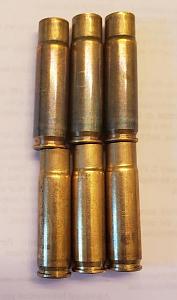***Update: The oven was in fact on set to 400* and the brass was cooked for 20-30 minutes***
Today I was powder coating some boolits in a toaster outside at 400 degrees. About 10-20 minutes after they had finished and the toaster turned off, I decided to dry some brass before priming them so I tossed them in the toaster for a bit. When I removed the cases, they had blue coloring all the way down to the rim. I dont know how hot the cases actually got but I have read that annealing starts at 482. I dont think that they actually got hot enough to anneal the entire case but the blue coloring has my worried. Should I toss them?
Here are two pics of the same cases in different lighting. The top three are the ones that got cooked. The bottom three are good brass for reference.


|
   
   
|


|



 Reply With Quote
Reply With Quote



















